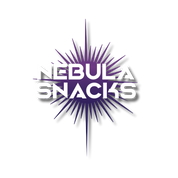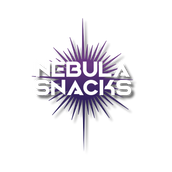Are you looking for a way to kickstart your journey to healthier eating habits? The Reboot diet might has recently come as as one you may want to consider.
This rather new dietary approach focuses on increasing your intake of fruits and vegetables while eliminating processed foods. We'll delve into the key principles of the Reboot diet and explore how it can benefit or harm your health.
What Is the Reboot Diet?
The Reboot diet is a short-term dietary plan designed to revitalize your eating habits. It is characterized by two main components:
1. Increased Fruit and Vegetable Intake: One of the central pillars of the Reboot diet is boosting your consumption of fruits and vegetables. These natural foods are rich in essential vitamins, minerals, and antioxidants that support overall health. Incorporating more of them into your daily meals can provide a wide range of nutritional benefits.
2. Elimination of Processed Foods: In stark contrast to the typical Western diet, the Reboot diet calls for the elimination of processed foods. This includes items like sugary snacks, fast food, and pre-packaged meals. By cutting out these processed products, you can reduce your intake of added sugars, unhealthy fats, and artificial additives.
The Benefits of the Reboot Diet?
The Reboot diet offers several potential benefits for those looking to make a positive change in their eating habits:
1. Weight Management: By focusing on whole, nutrient-dense foods and eliminating calorie-dense processed foods, the Reboot diet can support healthy weight management.
2. Improved Nutrient Intake: Increasing your fruit and vegetable consumption ensures that you're getting a wide variety of essential nutrients, including vitamins, minerals, and antioxidants.
3. Potential Food Sensitivity Discovery: For some individuals, the Reboot diet can serve as a natural elimination diet. By temporarily eliminating certain food groups, it may help identify potential food sensitivities or intolerances.
4. Hydration: Many variations of the Reboot diet emphasize increased water intake, which is essential for overall health and can aid in the detoxification process. Getting Started with the Reboot Diet Before embarking on the Reboot diet or any significant dietary change, it's essential to consult with a healthcare professional or registered dietitian. They can provide personalized guidance and ensure that the diet aligns with your specific health goals and needs.
Tips if you wish to try the Reboot diet:
1. Plan Your Meals: Create a meal plan that includes a variety of fruits and vegetables in different colors to maximize nutritional diversity.
2. Stay Hydrated: Drink plenty of water throughout the day to support the detoxification process.
3. Read Labels: When shopping, check food labels to avoid processed foods with added sugars, unhealthy fats, and artificial additives.
4. Monitor Your Progress: Keep a food diary to track your meals, how you feel, and any changes in your health or energy levels.
5. Seek Support: Consider joining a support group or seeking guidance from a dietitian to stay motivated and ensure you're meeting your nutritional needs.
Healthy Snacks for the Reboot Diet?
Sticking to the Reboot diet doesn't mean you have to sacrifice snacking. In fact, there are plenty of delicious and nutritious options that are perfectly in line with the principles of this dietary plan. Here are some Reboot-friendly snack ideas to keep your energy up throughout the day:
1. Zero-Sugar Chocolate: Yes, you read that right! You can eat chocolate on the reboot diet, you'll just need to find one without added sugars. You can try our Nebula Zero Sugar Added Chocolate Bites, which feature a delicious sugar free 73% dark chocolate and are filled with creamy cores that deliver a supernove of flavor!
2. Fresh Fruit: Keep a variety of fresh fruits on hand for a quick and natural energy boost. Personally, I'm a fan favorite of fresh berries - but grapes, as well as citrus fruits, like grapefruit, are also excellent choices. Pair them with a small amount of natural nut butter for added protein.

3. Vegetable Sticks with Hummus: Cut up crunchy vegetables like my personal favorite carrots or go for a different crunch in cucumbers or bell peppers and dip them in some chickpea hummus. Add to the variety with garlic or spicy hummus from time to time as well. This combination provides fiber, vitamins, and healthy fats to keep you full and satisfied.

4. Greek Yogurt with Berries: Greek yogurt is rich in protein and probiotics, making it a nutritious snack option. Top it with fresh or frozen berries for a burst of flavor and antioxidants. Or add a little chocolatey goodness with Nebula Zero Sugar Added Chocolate Chips!

5. Nuts and Seeds: A small handful of unsalted nuts or seeds can provide a satisfying crunch and a dose of healthy fats. Raw almonds and peanuts are a go-to of mine, but you can also give walnuts or chia seeds a try as they are both excellent choices.

6. Dried Fruit and Nut Mix: Create your own trail mix by combining dried fruits like apricots or raisins with a mix of nuts and seeds. Just be mindful of portion sizes, as dried fruits can be calorie-dense and high in natural sugar. These would also be a great option to add a little chocolatey goodness with Nebula Zero Sugar Added Chocolate Chips!

7. Rice Cakes with Avocado: Spread mashed avocado on whole-grain rice cakes for a creamy, satisfying snack. Avocado is packed with healthy monounsaturated fats and fiber. Add salt and pepper to atste and consider topping with fresh spinach, lettuce or tomatoes.

8. Chia Pudding: Mix chia seeds with unsweetened almond milk and a touch of vanilla extract. Let it sit in the fridge until it thickens to create a creamy and satisfying pudding. Lastly, another great and quick option to drop a few of our Nebula Zero Sugar Added Chocolate Chips for a burst of rich and bold chocolate without the sugar.

Remember that portion control is key when snacking, even on the Reboot diet. While these snacks are healthier alternatives to processed options, it's still important to enjoy them in moderation to maintain a balanced diet that aligns with your health goals.
So, whether you're craving something sweet, savory, or crunchy, these Reboot diet-friendly snacks have got you covered. Enjoy these treats as you embark on your journey toward healthier eating habits!
The Cons of the Reboot Diet?
While the Reboot diet has its merits, it's essential to consider some potential drawbacks, including those related to nutrition:
1. Potential for Nutrient Gaps: The Reboot diet, with its emphasis on fruits and vegetables, may inadvertently lead to nutrient gaps. For example, it may not provide sufficient protein, calcium, or certain B vitamins that are primarily found in other food groups like dairy, lean meats, and whole grains. Prolonged nutrient deficiencies can have adverse health effects.
2. Lack of Dietary Diversity: Restricting your food choices to a select group of items can limit dietary diversity. A diverse diet is essential for ensuring you get a broad spectrum of nutrients. Over time, a lack of variety can lead to nutrient imbalances and deficiencies.
3. Inadequate Fiber Intake: While fruits and vegetables are rich in dietary fiber, the Reboot diet's focus on them may still lead to insufficient fiber intake for some individuals. Whole grains and legumes, which are restricted on this diet, are additional sources of fiber that support digestive health.
4. Risk of Overconsumption: Without proper portion control, it's possible to overconsume calories even on a diet based on fruits and vegetables. Some fruits, like bananas or avocados, are calorie-dense, and consuming them in excess can hinder weight management efforts.
5. Sustainability Concerns: The Reboot diet may not be sustainable in the long term due to its restrictions. Many people find it challenging to maintain such a limited eating pattern for an extended period, which could lead to a return to less healthy eating habits.
6. Potential for Muscle Loss: The diet's low protein content, especially if followed for an extended period, may contribute to muscle loss. Adequate protein intake is vital for maintaining muscle mass and overall body function.
It's important to approach the Reboot diet with caution, considering both its potential benefits and drawbacks. Prioritizing a well-rounded and balanced diet that includes a variety of foods is typically recommended for long-term health and well-being. Consulting with a healthcare professional or registered dietitian before making significant dietary changes is always advisable to ensure that your nutritional needs are being met.
Overall
The Reboot diet can offers a fresh start to healthy eating by emphasizing the consumption of fruits and vegetables while eliminating processed foods - and has a number of pros, however a few cons to ones health & lifestyle.
While it can provide short-term benefits, it's essential to transition to a balanced, sustainable eating pattern for long-term health. Remember that individual results may vary, so consult with a healthcare professional before making significant dietary changes. Embark on your Reboot journey with enthusiasm and dedication, and you'll be on your way to a healthier, revitalized you!


